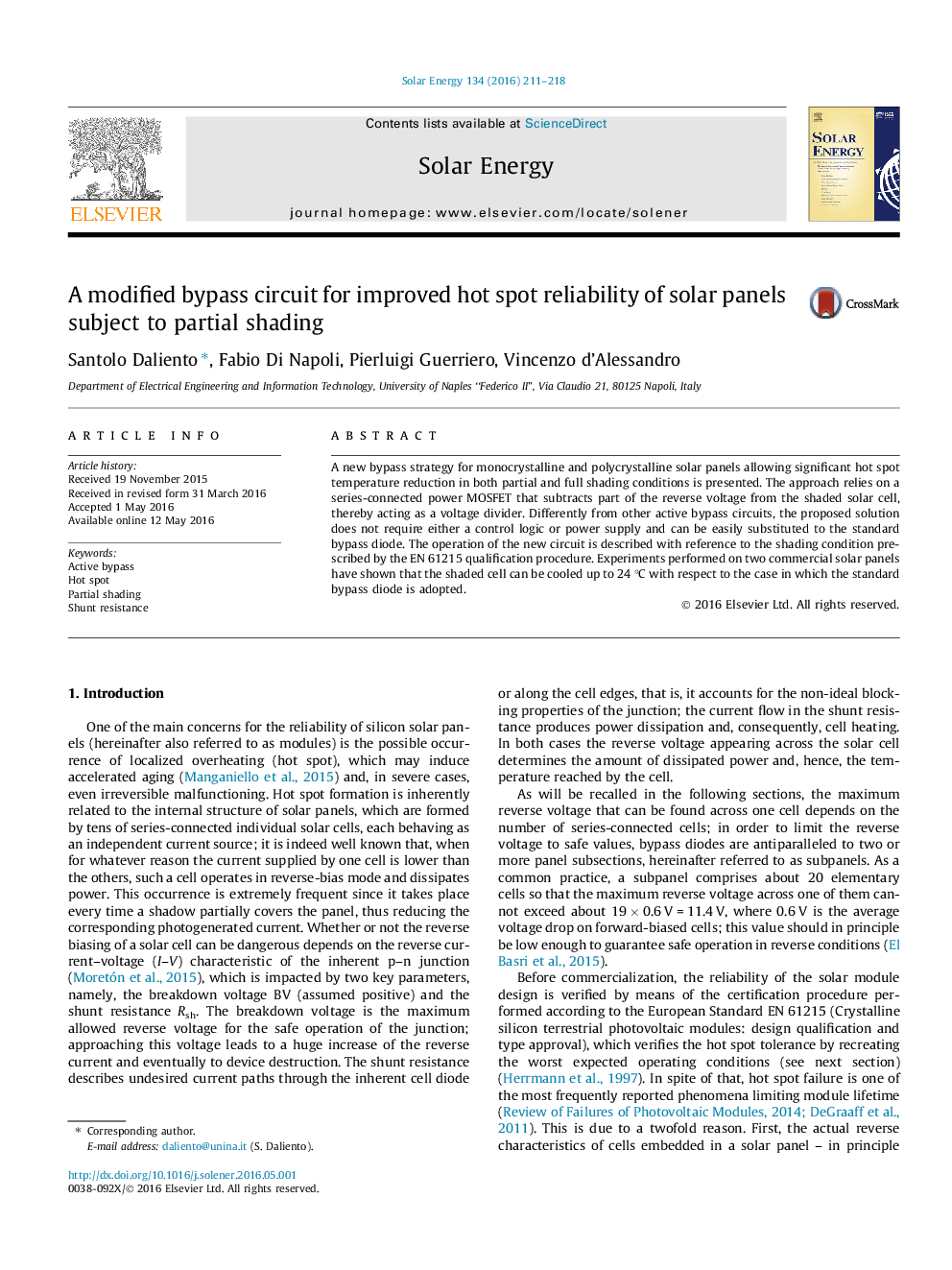| Article ID | Journal | Published Year | Pages | File Type |
|---|---|---|---|---|
| 1549294 | Solar Energy | 2016 | 8 Pages |
•A bypass circuit for PV modules suited to reduce the hot spot temperature is proposed.•Mechanisms leading to hot spot formation are reviewed.•Thermographic images are exploited for characterizing PV panels in bypass operation.•The cooling improvement compared to a standard diode is confirmed by experiments.
A new bypass strategy for monocrystalline and polycrystalline solar panels allowing significant hot spot temperature reduction in both partial and full shading conditions is presented. The approach relies on a series-connected power MOSFET that subtracts part of the reverse voltage from the shaded solar cell, thereby acting as a voltage divider. Differently from other active bypass circuits, the proposed solution does not require either a control logic or power supply and can be easily substituted to the standard bypass diode. The operation of the new circuit is described with reference to the shading condition prescribed by the EN 61215 qualification procedure. Experiments performed on two commercial solar panels have shown that the shaded cell can be cooled up to 24 °C with respect to the case in which the standard bypass diode is adopted.
